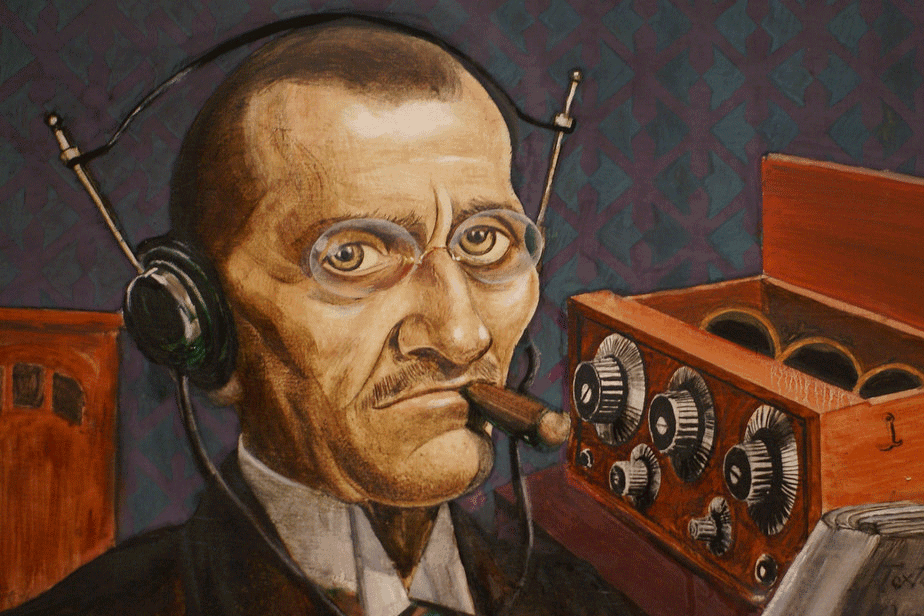The word “innovation” is one of the most commonly used words today, and when it comes to experimentation in art, the artists around the world has become super creative too
We currently live in an era where technology, art, and environment share similar ideas and works together in producing innovative artworks by artists. This has, indeed, improved skill as a whole.
Tracing back through time, you will discover an unending list of history books and art streams where seven prominent paintings have a similar story to tell.
These paintings reflect the artists’ mind in compelling us to view a subject in a different approach and perspective, and we should try to question the normalcy of the things we see.
Through their psychedelic and hyper-imagination, which they termed “normal,” was the way they expressed themselves and their ideologies.
Let us take a look at seven great examples of experimentation in art.
Grauer Tag Painting by George Grosz
George Grosz was well-known for his caricature-like paintings that showed how life looked like in the German city of Berlin at the time.
But in 1920-1921, Grosz looked for new agitprop with this work, one with stylish visual language.
With the use of mediums that breathes Italian metaphysical art themes, George Grosz went beyond Dada and New Objectivity group of the Weimar Republic era. Moving to the USA in 1933, he abandoned his earlier style of the subject matter.
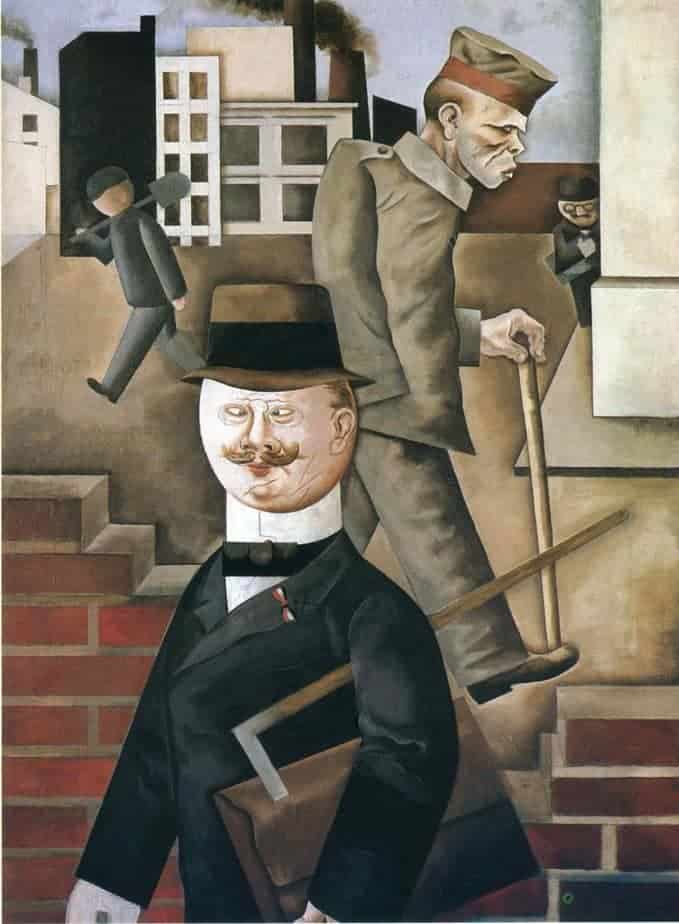
The paintings reminded the world of Giorgio de Chirico, which was something that looked like faceless people in empty areas in front of some standard industrial buildings.
These details mostly represented political issues and statements rather than existential.
The painting exposes controversial issues that were highlighted by a low brick wall.
There was a cross-eyed German nationalist council officer in the foreground.
According to the New Objectivity exhibition in Manheim in 1925, the other men behind the welfare officer was a disabled war veteran, a worker, and a black market dealer.
The illustration of this art divided society into two classes.
Grosz, however, started using the critical ‘Verism’ style and did not produce any more oil paintings as the years passed.
The Great Metaphysician by Giorgio Chirico
De Chirico was a mysterious man, and his ideologies reflected in his works. In this painting, he created an empty building square in the middle of a strange monument.
The monument was made with furniture parts and construction tools with an eerie overall display.
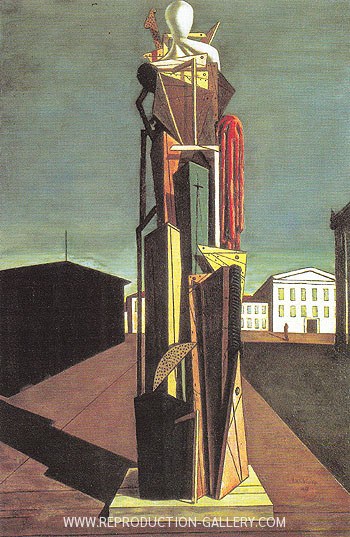
The edifice was lit up with the summer sunlight beaming upon it like a stage while the darkness of the skies in the horizons highlights the nightfall.
To maintain the discontinuity, the chimney of the factory can be seen in the sky where the modern era bursts into the cosmos of quattrocento.
For his transcended world view, De Chirico discovered Italy in a metaphysical stage. This view, however, was influenced by Nietzsche.
“The conception of a picture has to be something which does not make any sense in itself and no longer signifies at all from human logic,” He said.
The School of Athens by Raphael
Made by Raphael between 1509 and 1511, The School of Athens was identified as a sound reflection of the Renaissance theory.
The painting consists of many ideas of great and famous philosophers, mathematicians, and scientists formed into one image.
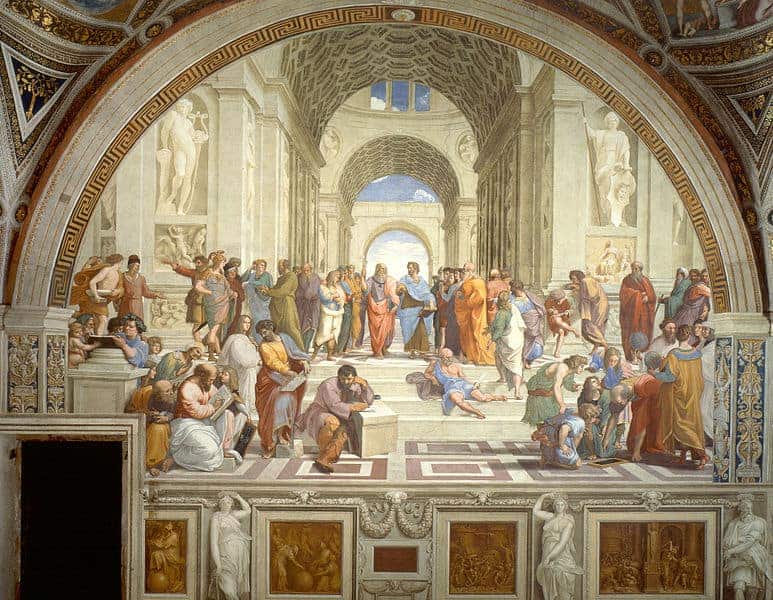
Here, men like Aristotle, Socrates, Plato, Da Vinci, and many more can be seen in the painting.
The painting shows them learning and interacting with each other.
These great men did not live during the same time frame, but Raphael majestically brings them all together. This was meant to signify the celebration of that age.
The Italian Renaissance artist created the art piece to decorate the rooms in the Apostolic Palace in the Vatican. The rooms are now called the Stanze di Raffaello which was made to represent and pay homage to the Renaissance era.
The painting can still be found in some of the room sections, the Vatican, which was commissioned by his sponsor, Pope Julius II.
Der Radionist by Kurt Gunter
In early 1928, German art critic and historian Franz Roh discovered something about legendary paint created by Kurt Gunter.
He described the interiors as a petit-bourgeois living room.
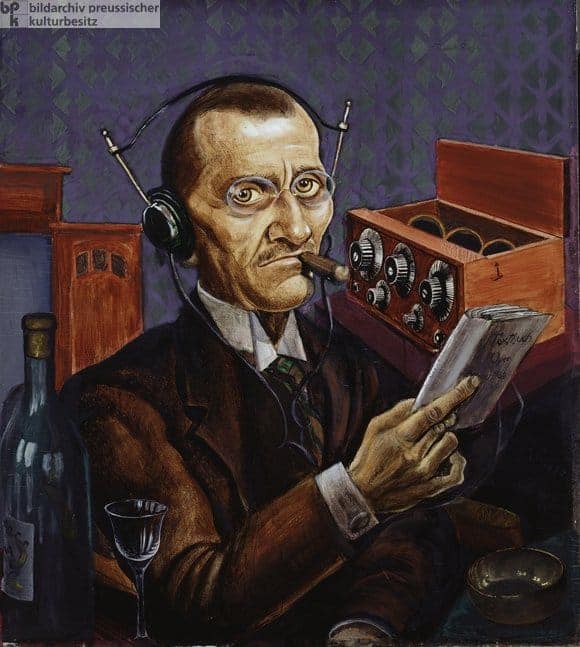
However, this contradicts the intentions of Gunter’s idea.
“petit-bourgeois…has shut himself in on a Sunday with a crackling radio set, has clamped on headphones, opened a bottle of red wine and picked up an opera libretto and a cigar a vengeful bachelor’s idyll of our time and a musical fortification, with resistance glinting in his eyes.”
He described it as just a picture of Herr Schreck, a paraplegic and wheelchair-bound German listening to the radio as it broadcasts a program on October 29th, 1923, which signified his improvement in expanding his social web.
In shaping the face of society, the theme of his painting highlighted the positivity and revolutionary effect of his invention.
It then later became a major subject of many more new objectives painting artworks to come.
Portrait of Madame Isabel Styler-Tas by Salvador Dali
This painting was created by the legendary Surrealists, Salvador Dali, in 1929.
The picture depicts the picture of successful Amsterdam jeweler Louis Tas’s daughter, Isabel, an arrogant and rich businesswoman.
The image had her wearing a sophisticated red clothe with a brooch of medusa pinned to her breast.
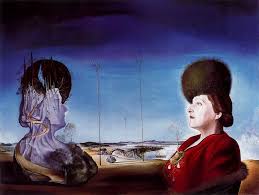
Behind her was a landscape embodied in deep fantasy. Opposite her was a fossilized version of herself, staring back at her.
With an excellent fascination for perspectives and illusion, Dali flirted with the modernism era, which was going through the cubist phase at the time.
He was able to translate old-fashioned artworks into modern issues, and that was one of the things that made him famous.
He also noted that “As far as a portrait painting goes, I intended to create a fateful connection between each of the different personalities and their backgrounds, in a manner far removed from direct symbolism.
This is in terms of medium and iconography to encapsulate the essence of each of my subject in mind”.
Roy Lichtenstein’s TAKKA TAKKA
In response to the revolution of popular culture in America in the 1950s and 1960s, there was an urgent need to maintain the status quo due to its power and growing fame.
After its emergence, there was no stopping in shaking up and then changing the perspective of art critics and conformist; in fact, the views of the whole world of art.
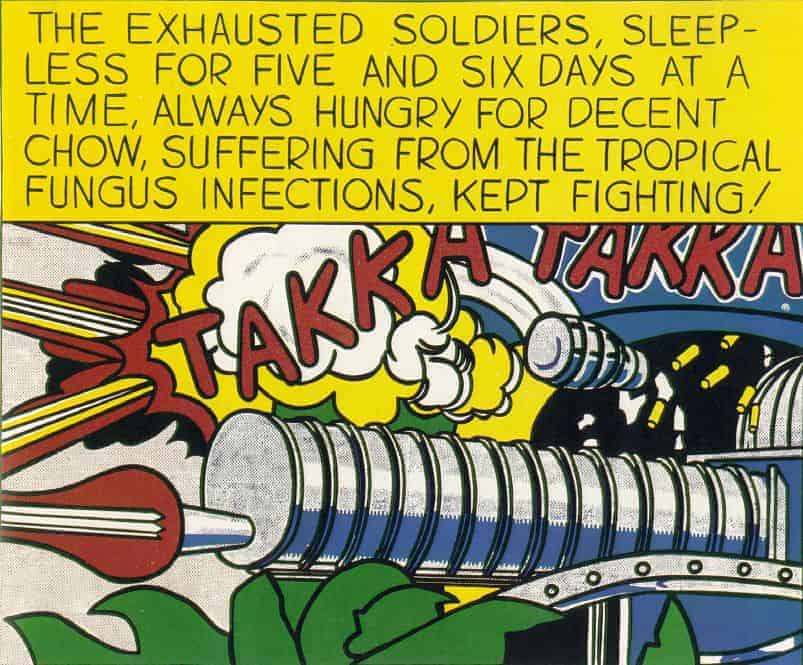
Takka Takka was created by Roy Lichtenstein, who was trained in the USA pilot and a World War II veteran but never saw combat.
He ironically used the style of a cartoon sound effect to name his work. “takka takka”; the sound of a firing machine gun. This artwork represents the entire elements of pop art and its importance.
About the cartoon shows and art of that time were always created to reach a common goal; a swashbuckling, funny, and ridiculously heroic commentary.
Using this style in effectively conveying his message, Lichtenstein aimed to leave a thought-provoking and effect on his audience using the juxtaposition to his advantage. This work is considered to be a great example of experimentation in art because of the artist’s courage to convey a strong perspective about a relevant subject
When Lichtenstein’s work was criticized for been militaristic, he smartly responded,” the heroes depicted in comic books are fascist types, but don’t take them seriously in these paintings. Maybe there is a point in not taking them seriously, a political position. I use them for purely formal reasons”.
The Suicide of Dorothy Hale by Frida Kahlo
This artwork is undoubtedly one of the most potent artworks to date. Despite the limited amount of details on the portrait, it was still powerful enough to shake the world when it was produced.
The artist displayed the image of Dorothy Hale’s suicide in a truly artistic manner – also one of the bold subjects when it comes to experimentation in art
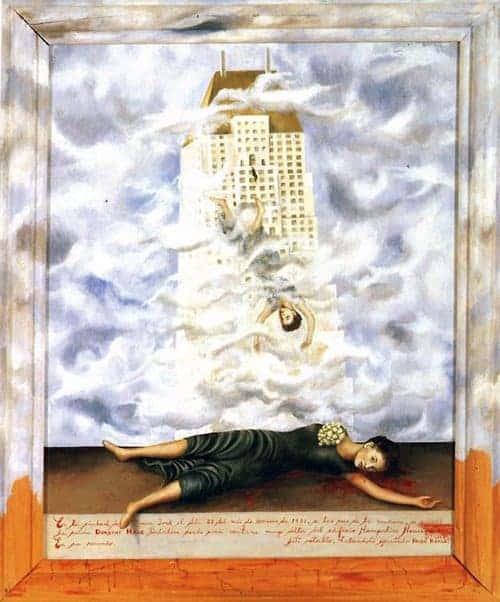
However, it was not an initial plan of Frida Kahlo to paint the death of a fast-rising American actress of the time as she was commissioned to do. Read Frida Kahlo’s Lust for Life
The building she had fallen from can be seen behind almost entirely shrouded in clouds, representing the extent of the height in which she had reached and fell to her death. Frida passed her message in a strong sense of metaphor rather than literal.
Dorothy Hale’s body can be found at the bottom of the image, which symbolizes the impact of its realism.
20 famous paintings of Frida Kahlo
The painting possessed every sense of art, from the real to the surreal, which clearly shows every detail of Hale’s suicide.
Standing at 60.4 x 48.6 cm in the Pheonix Art Museum, the painting translates;
“In the city of New York on the twenty-first day of October 1938, at six o’clock in the morning, Mrs. Dorothy Hale committed suicide by throwing herself out of a very high window of the Hampshire House building. In her memory…”
Conclusion – Experimentation in Art
A brief story on how some of the most formidable artists have dug deep into their bright imagination and conjured great art pieces.
Using the medium of diverse technicalities, themes, and subjects, they flawlessly passed their message in a truly artistic manner that was sure to change the face of art as a whole.


